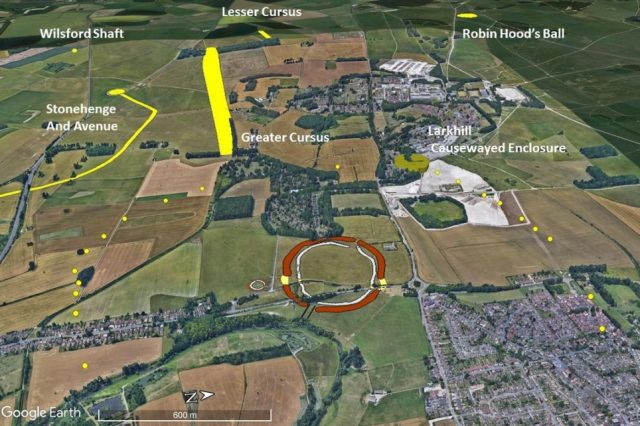The application of advanced dating techniques indicates the presence of Neolithic inhabitants in the region at least 5,800 years ago.
Archeologists have confirmed one of the oldest ancient sites in Britain.
Delving into the mysteries of Dorstone Hill in Herefordshire, archaeologists have employed cutting-edge radiocarbon dating techniques to unveil the unexpected age of these Neolithic monuments. The results suggest a far more ancient timeline than previously assumed. In other words, and as one popular author by the name of Hancock would say, “Things keep getting older.”
Tracing Britain’s Earliest Farmers: The Neolithic Era
The application of advanced dating techniques indicates the presence of Neolithic inhabitants in the region at least 5,800 years ago. These people, transitioning from hunter-gatherer lifestyles to farming and monument building, establish Dorstone Hill as the earliest culturally Neolithic site in the west Midlands of England. This aligns with early dating from Penywyrlod and Gwernvale in Wales’s Black Mountains.
These findings challenge existing theories about the spread of Neolithic practices across Britain. Rather than a uniform southeast-to-northwest progression, these practices appear to have propagated sporadically. Regions of hunter-gatherers and farmers likely co-existed for centuries.
Dorstone Hill: One of the Oldest Ancient Sites in Britain
Between 2011 and 2019, Dorstone Hill underwent extensive excavations. However, the application of advanced statistical methods to the resulting radiocarbon dates is a novel approach. The analysis reveals that activities at the site commenced earlier than elsewhere in the region. It makes it one of the oldest ancient sites in Britain.
To contextualize the various structures and deposits at Dorstone Hill, Professors Keith Ray and Julian Thomas, along with their team from Cardiff University, the University of Manchester, and Manchester Metropolitan University, conducted a series of radiocarbon dating and chronological modeling. Their findings, published in the journal Antiquity, shed new light on the site’s timeline.
Bayesian Chronological Modeling: Sharpening the Temporal Focus
Bayesian chronological modeling is a powerful mathematical tool that helps archaeologists combine all available dating evidence. This includes radiocarbon dates and stratigraphy, enabling them to construct a more robust chronological framework.
In this particular case, the team gathered 12 new radiocarbon measurements from bone, antler, and short-life carbonized plant material discovered at the site. After being modeled against identified stratigraphy and archaeological phases, the results demonstrated that virtually all phases of occupation occurred earlier than anticipated, likely extending beyond 3800 BC.
Dorstone Hill: A Regional Epicenter of Neolithic Culture
“Dorstone Hill seems to have hosted a series of phenomena at an unusually early date,” Professor Thomas stated, identifying it as a significant regional center—a place of origins and beginnings—especially significant throughout the earlier fourth millennium BC.
These findings indicate that the site’s monuments are among Britain’s earliest, despite their landlocked location distant from the southeast, where continental Neolithic migrants were presumed to have first arrived.
Reassessing Britain’s First Farmers
This discovery has profound implications for our understanding of Britain’s first farmers. It suggests their spread across the island was not a uniform process, but rather uneven and complex, characterized by precocious change, time-lags, and diverse interactions with indigenous hunter-gatherers.
“The research at Dorstone Hill underscores the value of comprehensive archaeological investigation beyond the ‘core’ areas of Neolithic archaeology,” the authors noted. “It underlines Dorstone Hill’s significance as a place where regional social identities were shaped and reshaped throughout the earlier fourth millennium BC.”
PLEASE READ: Have something to add? Visit Curiosmos on Facebook. Join the discussion in our mobile Telegram group. Also, follow us on Google News. Interesting in history, mysteries, and more? Visit Ancient Library’s Telegram group and become part of an exclusive group.



